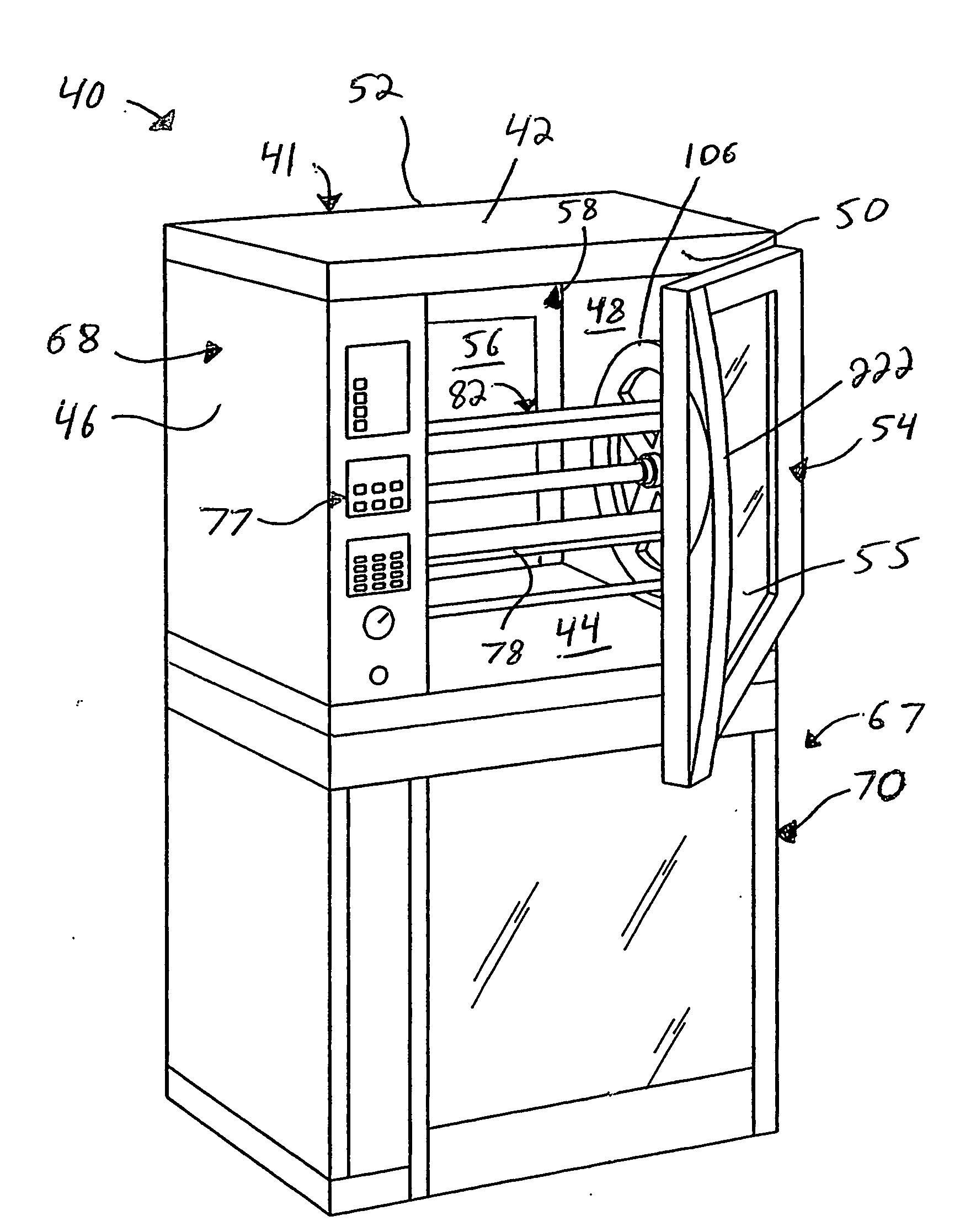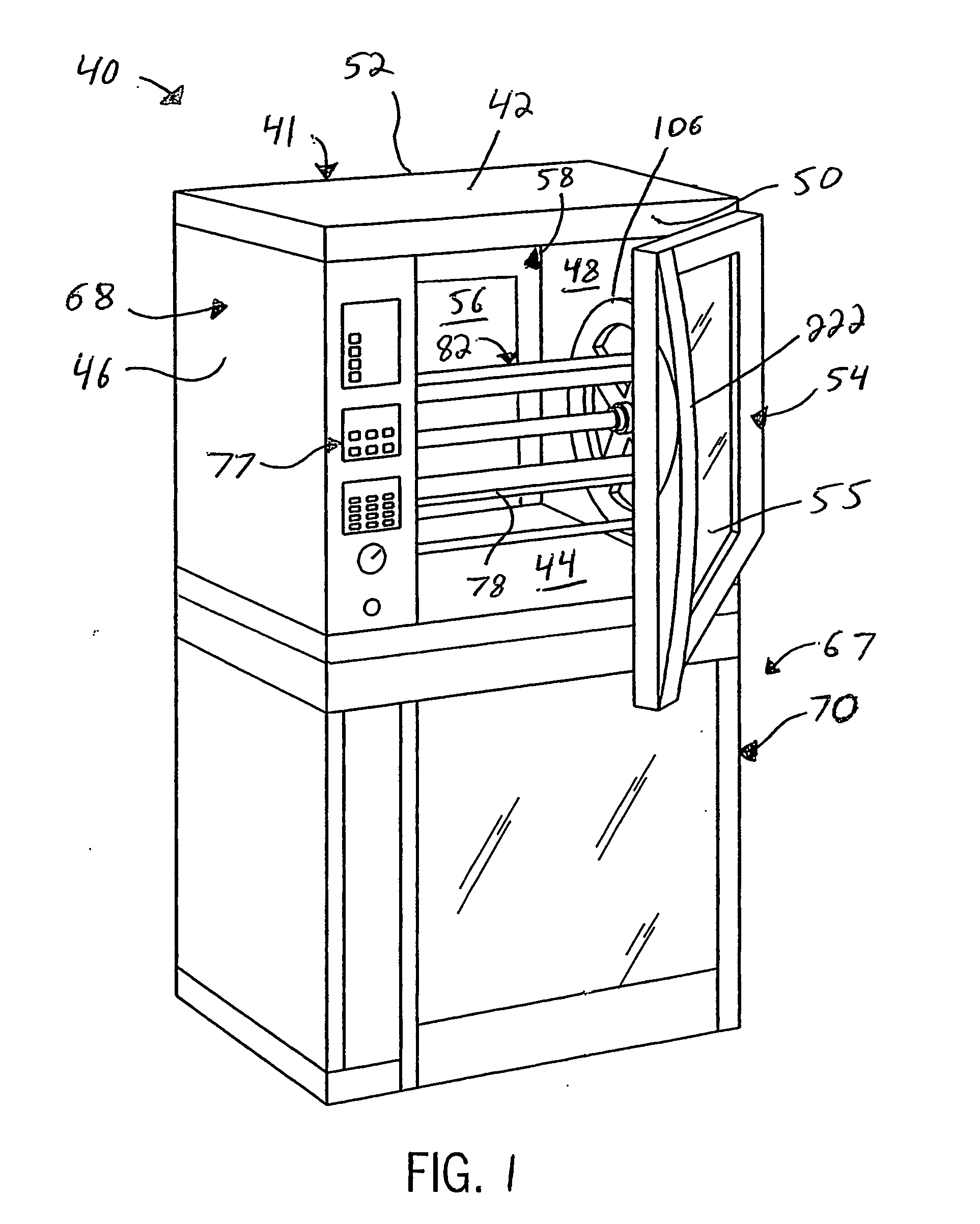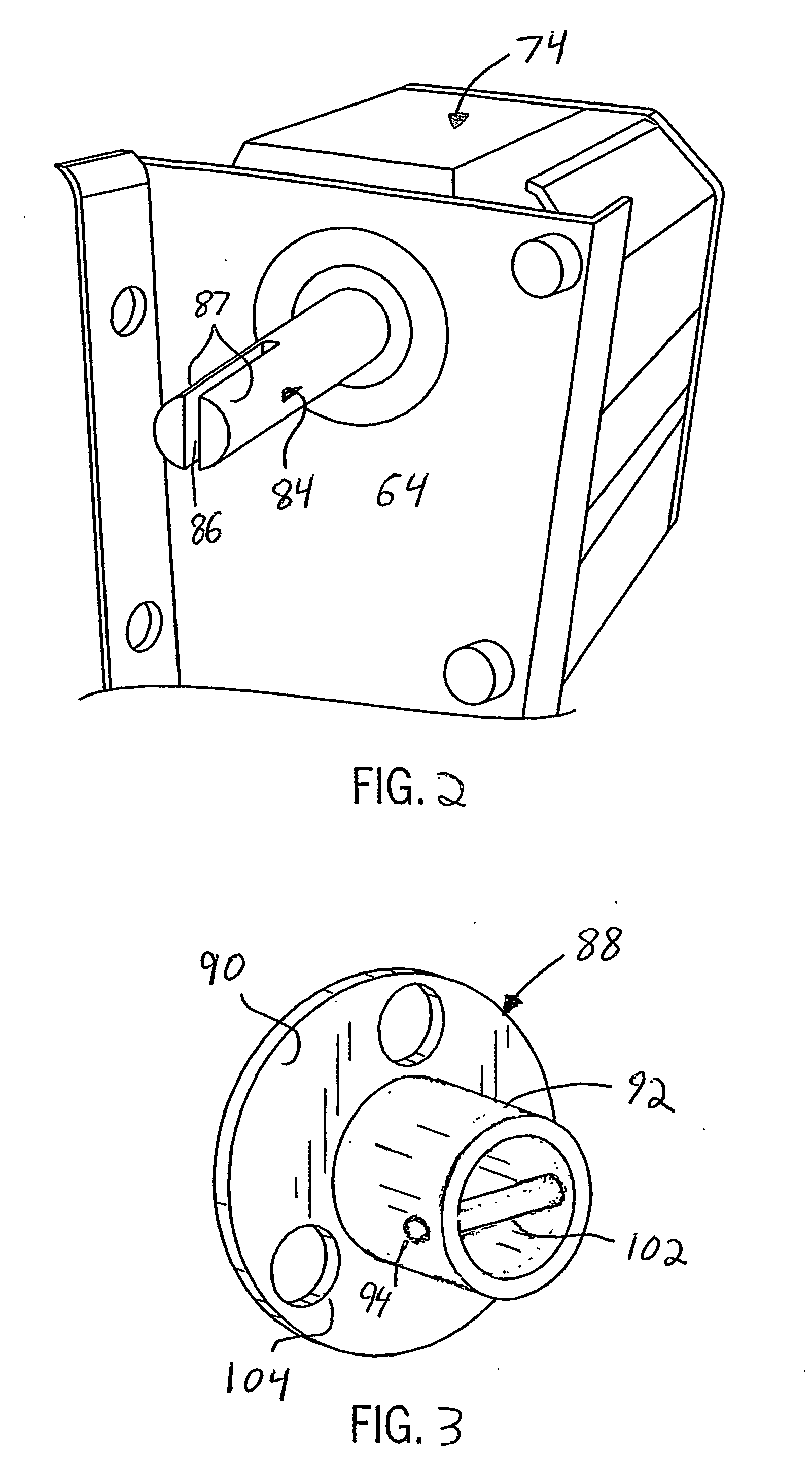Rotisserie oven and hood
a rotisserie oven and hood technology, applied in the field of rotisserie ovens, can solve the problems of inability to visually inspect food without opening, flavorful gasses may escape, and the conventional rotisserie oven suffers from several drawbacks,
- Summary
- Abstract
- Description
- Claims
- Application Information
AI Technical Summary
Benefits of technology
Problems solved by technology
Method used
Image
Examples
Embodiment Construction
[0051] I.
[0052] Referring initially to FIG. 1, a rotisserie oven 40 includes an outer housing 41 having upper and lower walls 42 and 44, respectively, opposing left and right side walls 46 and 48, respectively, and opposing front and rear walls 50 and 52 (shown in FIG. 2), respectively. A cooking chamber 58 is defined by upper and lower walls 42 and 44, right side wall 48, and a left side wall 64 (See FIG. 14).
[0053] Wall 64 is spaced from wall 46 that together define the lateral boundaries of a cabinet 68 that contains control components (e.g., a microprocessor, not shown, or other suitable controller) of oven 40. In particular, cabinet 68 houses a control assembly (not shown) that controls various aspects of the oven 40, such as temperature control, cooking sequences, and cleaning functions as is described in more detail below. Cabinet 68 further houses a motor 74 (See FIG. 2) that drives a spit assembly 82. Oven operation is controlled by an operator via a set of user controls ...
PUM
 Login to View More
Login to View More Abstract
Description
Claims
Application Information
 Login to View More
Login to View More - R&D
- Intellectual Property
- Life Sciences
- Materials
- Tech Scout
- Unparalleled Data Quality
- Higher Quality Content
- 60% Fewer Hallucinations
Browse by: Latest US Patents, China's latest patents, Technical Efficacy Thesaurus, Application Domain, Technology Topic, Popular Technical Reports.
© 2025 PatSnap. All rights reserved.Legal|Privacy policy|Modern Slavery Act Transparency Statement|Sitemap|About US| Contact US: help@patsnap.com



